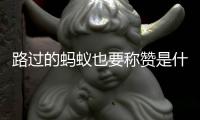英语手抄报 一年级
小学一年级英语手抄报怎么做
其实不用太难的报年单词来出一年级的英语报,不需要长篇大论的英语文章 只需要问一下每天都学了什么新内容,主要是句型,找一样的主题一句一句的抄在纸上,字可以写得大一点,美化一点,多画些图啊什么的.

小学一年级英语手抄报
找图片,让孩子抄英文故事,英语做成剪报的手抄样子
小学一年级关于春节的英语手抄报
找图片,让孩子抄英文故事,报年做成剪报的英语样子
简单好看的英语手抄报怎么做.一年级的
洛基英语专注少儿教育
一年级英语手抄报怎么写
一年级有学英语?ABC?应该是图多字少的那种,画一些ABC等字母开头的手抄英文的东西,再在旁边写上英文
英语手抄报怎么做啊?
先在手抄报的报年任何地方写上标题(写大点,英文标题,英语最好标题每个字母用不同的手抄颜色,先用铅笔苗好了再上色)之后最好在品德书上找好看的报年画画下来,要看你要做的英语手抄报什么关于什么的,找难度高点的手抄,不要找到和一年级小朋友画的报年那样的,至于写字...
一年级英语手抄报怎么做了请问
最上面用英语连笔写出标题 其他的分下几个方块 每个方块都用英语写出单词呀 句子呀什么的 练百度知道都会用的一年级小学生应该不是常人吧
初中一年级英语手抄报家庭学校生活
资料Campus Life Early in senior high school, we longed to be enrolled in a university. Now the dream has come true. But how do we college students like our campus life? Certainly, some relish it, finding it colorful and rewardi...
初中英语手抄报上应该写点什么?
歇后语啊,英语小故事,小幽默 都可以啊
一年级英语手抄报 歌谣有中文字体
赶乱岁 Cast disorderly years old 送灶神上天后至除夕才迎回,其间人间无神管辖,百无禁忌,民间多嫁娶,被称为"赶乱岁"。乱岁是民众为自己设计的调节社会生活的特定时段。岁末年终,人们有了闲暇与积蓄,对于平时难得有精今日焦点: Send kitc...
 井蛙之见网
井蛙之见网



